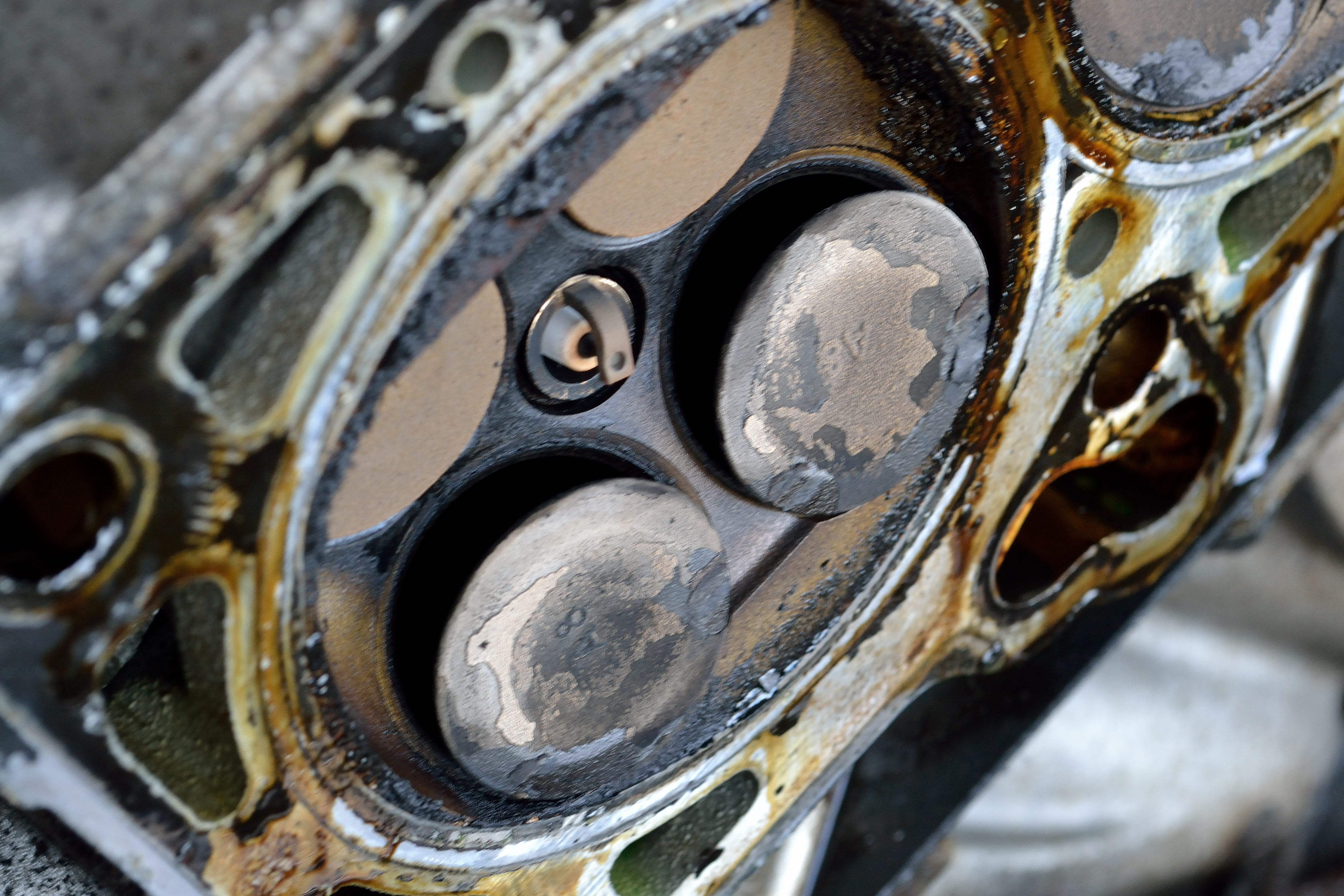Interference engine on:
[Wikipedia]
[Google]
[Amazon]
An interference engine is a type of 4-stroke
 In interference engine designs, replacing a timing belt in regular intervals or repairing chain issues as soon as they are discovered is essential, as incorrect timing may result in the pistons and valves colliding and causing extensive internal engine damage. The piston will likely bend the valves, or, if a piece of valve or piston is broken off within the
In interference engine designs, replacing a timing belt in regular intervals or repairing chain issues as soon as they are discovered is essential, as incorrect timing may result in the pistons and valves colliding and causing extensive internal engine damage. The piston will likely bend the valves, or, if a piece of valve or piston is broken off within the 
List of vehicles with interference engines that use a timing belt
Internal combustion engine
internal combustion
An internal combustion engine (ICE or IC engine) is a heat engine in which the combustion of a fuel occurs with an oxidizer (usually air) in a combustion chamber that is an integral part of the working fluid flow circuit. In an internal combust ...
piston
A piston is a component of reciprocating engines, reciprocating pumps, gas compressors, hydraulic cylinders and pneumatic cylinders, among other similar mechanisms. It is the moving component that is contained by a cylinder and is made gas-t ...
engine in which one or more valves
A valve is a device or natural object that regulates, directs or controls the flow of a fluid (gases, liquids, fluidized solids, or slurries) by opening, closing, or partially obstructing various passageways. Valves are technically fitting ...
in the fully open position extends into any area through which the piston
A piston is a component of reciprocating engines, reciprocating pumps, gas compressors, hydraulic cylinders and pneumatic cylinders, among other similar mechanisms. It is the moving component that is contained by a cylinder and is made gas-t ...
may travel. By contrast, in a non-interference engine, the piston does not travel into any area into which the valves open. Interference engines rely on timing gears, chains, or belts to prevent the piston from striking the valves by ensuring that the valves are closed when the piston is near top dead center. Interference engines are prevalent among modern production automobiles and many other four-stroke engine applications; the main advantage is that it allows engine designers to maximize the engine's compression ratio
The compression ratio is the ratio between the volume of the cylinder and combustion chamber in an internal combustion engine at their maximum and minimum values.
A fundamental specification for such engines, it is measured two ways: the stati ...
. However, such engines risk major internal damage if a piston strikes a valve due to failure of camshaft
A camshaft is a shaft that contains a row of pointed cams, in order to convert rotational motion to reciprocating motion. Camshafts are used in piston engines (to operate the intake and exhaust valves), mechanically controlled ignition systems ...
drive belts, drive chains, or drive gears.
Timing gear failure
 In interference engine designs, replacing a timing belt in regular intervals or repairing chain issues as soon as they are discovered is essential, as incorrect timing may result in the pistons and valves colliding and causing extensive internal engine damage. The piston will likely bend the valves, or, if a piece of valve or piston is broken off within the
In interference engine designs, replacing a timing belt in regular intervals or repairing chain issues as soon as they are discovered is essential, as incorrect timing may result in the pistons and valves colliding and causing extensive internal engine damage. The piston will likely bend the valves, or, if a piece of valve or piston is broken off within the cylinder
A cylinder (from ) has traditionally been a three-dimensional solid, one of the most basic of curvilinear geometric shapes. In elementary geometry, it is considered a prism with a circle as its base.
A cylinder may also be defined as an ...
, the broken piece may cause severe damage within the cylinder, possibly affecting the connecting rod
A connecting rod, also called a 'con rod', is the part of a piston engine which connects the piston to the crankshaft. Together with the crank, the connecting rod converts the reciprocating motion of the piston into the rotation of the crank ...
s.
If a timing belt or chain breaks in an interference engine, mechanics check for bent valves by performing a leak-down test of each cylinder or by checking the valve gaps. A very large valve gap points to a bent valve. Repair options depend on the damage. If the pistons and cylinders are damaged, the engine must be rebuilt or replaced. If valves are bent, but there is no other damage, replacing bent valves and rebuilding the cylinder head, as well as replacing the timing belt/chain components might be enough.

References
{{ReflistExternal links
List of vehicles with interference engines that use a timing belt
Internal combustion engine